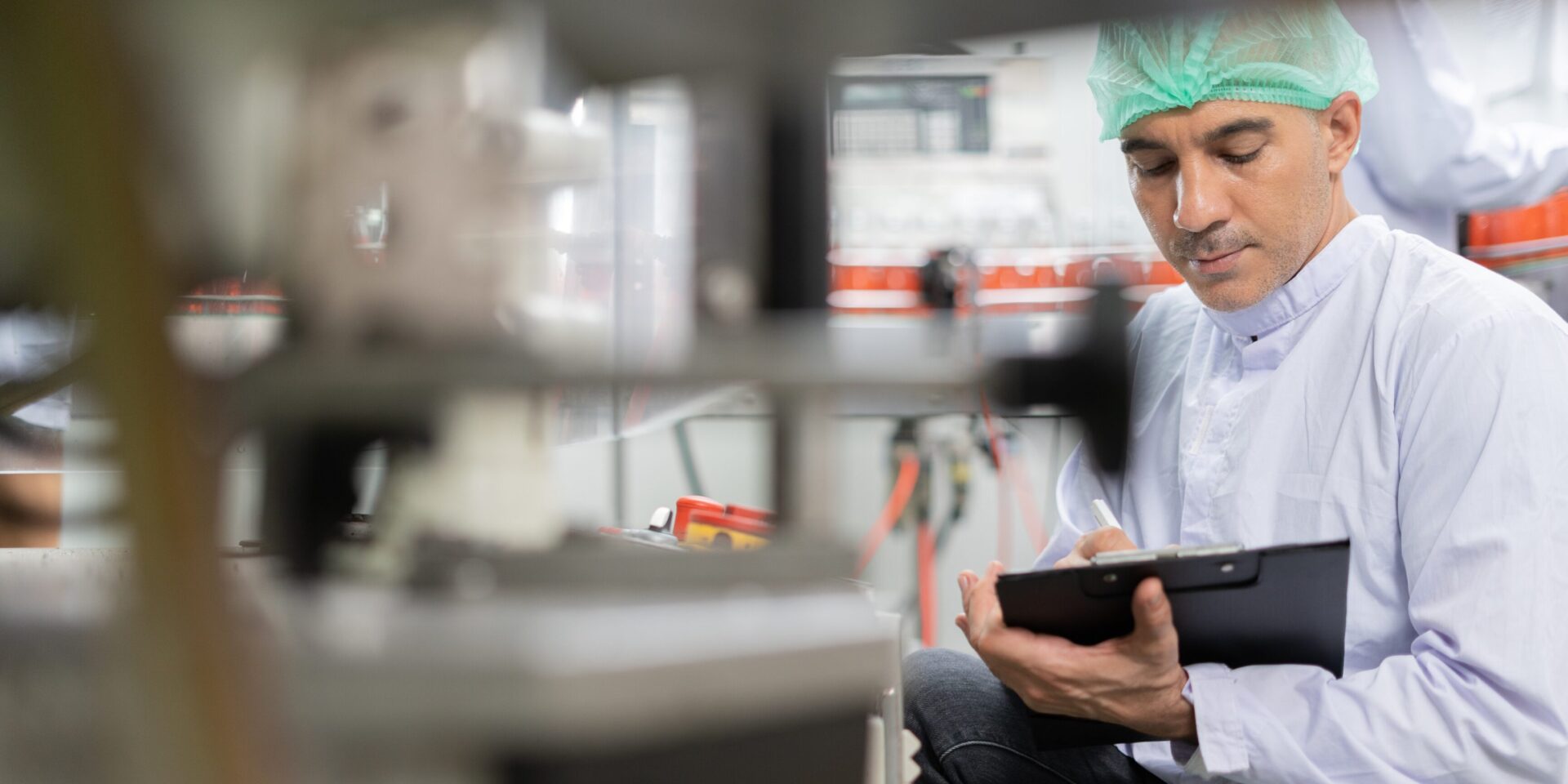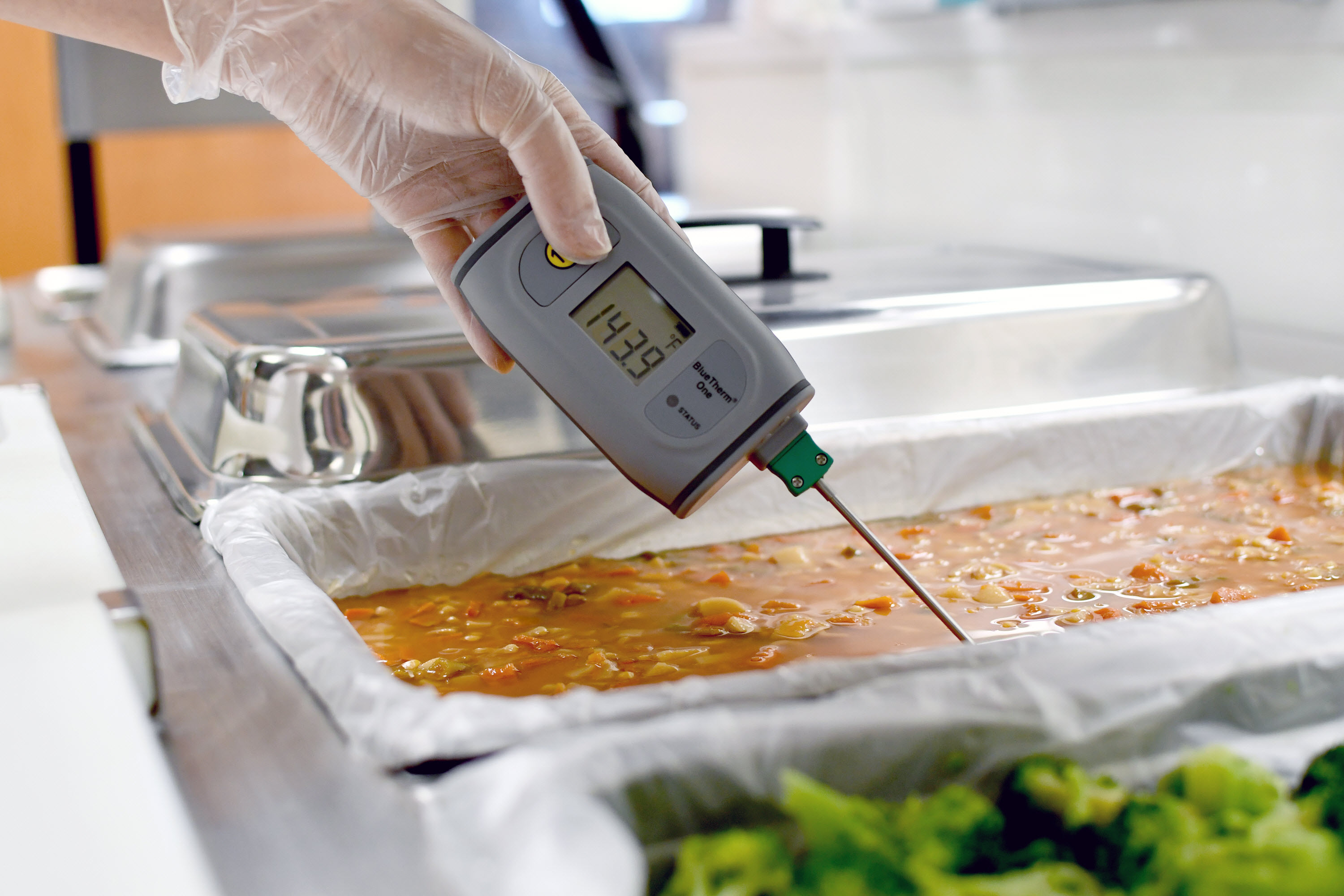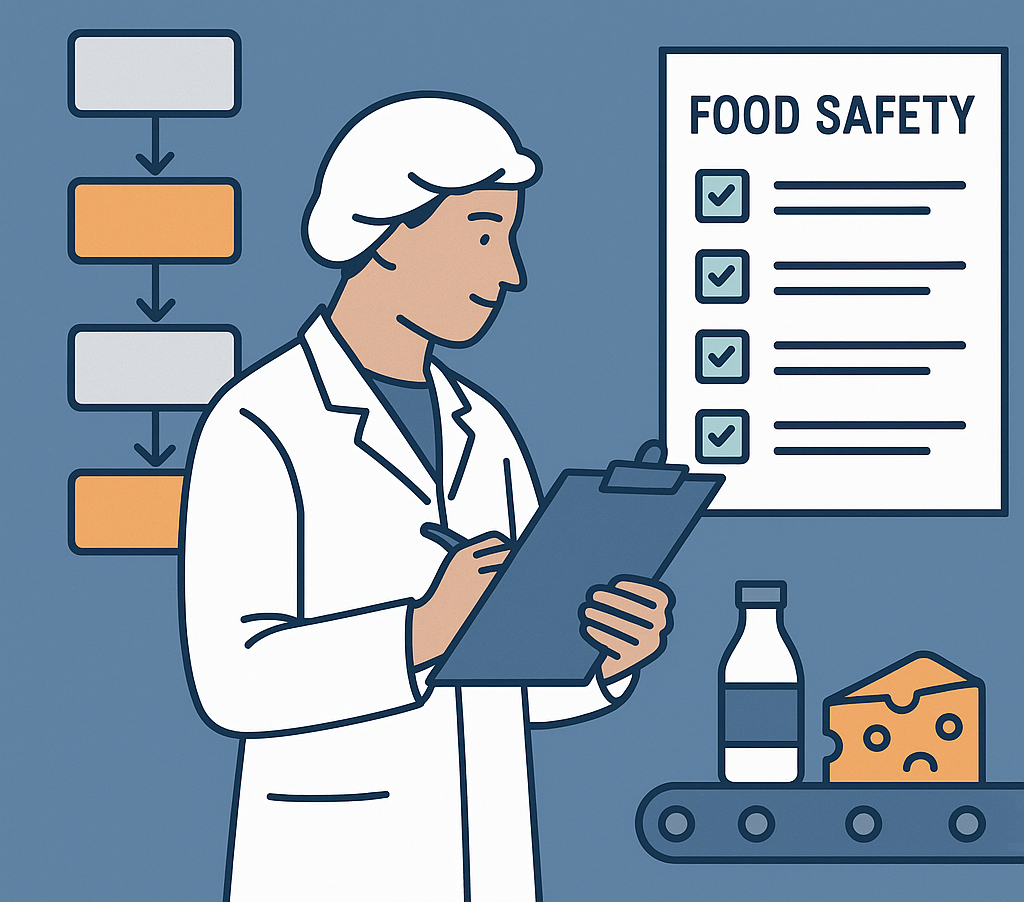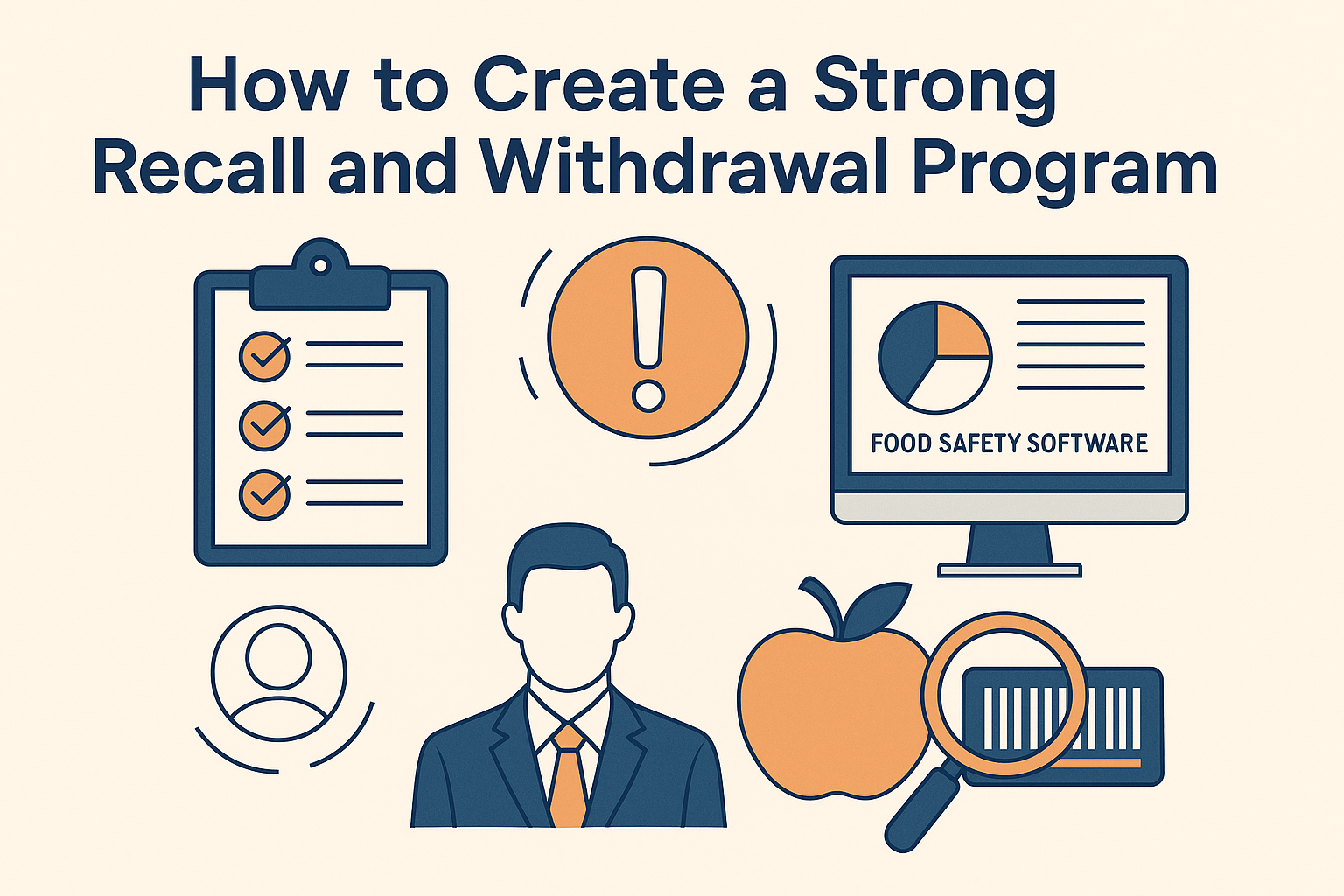In today’s high-stakes food industry landscape, environmental monitoring is no longer a box-ticking exercise—it’s a dynamic, data-driven discipline that underpins public trust and regulatory success. Over the past decade, the convergence of heightened regulatory scrutiny, more virulent pathogens, evolving supply chains, and the rise of digital traceability has transformed environmental monitoring from a reactive activity into a strategic pillar of operational excellence.
This article will demystify what’s driving these shifts, lay out a step-by-step approach for developing and modernizing an effective Environmental Monitoring Program (EMP), and offer real-world examples to inspire practical action.
The Critical Shifts in Environmental Monitoring Programs
1. From Static Schedules to Risk-Based, Dynamic Monitoring
Traditionally, many facilities relied on static sampling plans—fixed intervals, fixed locations, and limited flexibility. However, regulators like the FDA, CFIA, and GFSI-recognized schemes now emphasize risk-based programs. This approach requires:
-
Continuous reassessment of contamination risks.
-
Adjusting sampling frequency and location based on production volume, ingredient profiles, and emerging hazards.
-
Integrating historical data trends to identify hotspots proactively.
2. The Rise of Data-Driven Decision Making
The old paradigm was paper records or disconnected spreadsheets that rarely informed real-time decisions. Modern EMPs use food safety software and digital dashboards that:
-
Capture environmental swab results as soon as they become available.
-
Trigger alerts for deviations automatically.
-
Enable predictive analytics to spot contamination patterns before they cause product recalls.
3. Integration with Food Traceability and Recall Preparedness
A major shift is how EMP results are now directly linked to traceability and recall protocols. When environmental positives occur (e.g., Listeria monocytogenes), companies must:
-
Rapidly trace which product lots may have been exposed.
-
Document investigative and corrective actions.
-
Demonstrate to regulators that contamination did not enter commerce.
This level of transparency is nearly impossible without a robust food traceability software platform or fully integrated digital record-keeping.
4. Increased Regulatory and Customer Expectations
Not only have regulators stepped up expectations—major retailers and foodservice customers have also elevated supplier requirements. Third-party audits often scrutinize:
-
Whether EMP sampling plans are risk-based.
-
If the facility can show verification of cleaning effectiveness.
-
The capability to track trends and respond swiftly.
Ignoring these expectations can result in lost contracts, regulatory enforcement, or costly brand damage.
5. A Shift Toward a Culture of Accountability
Finally, EMPs today demand a cross-functional culture. No longer is environmental monitoring only a Quality Assurance duty. Operations, Sanitation, Maintenance, and even Executive Leadership are accountable for results. This culture shift requires:
-
Clear ownership of sampling, testing, response, and continuous improvement.
-
Training across all levels of staff.
-
C-suite visibility and commitment to resource allocation.
A Step-by-Step Approach to Building a Modern EMP
If your Environmental Monitoring Program feels outdated, you are not alone. Below is a step-by-step framework you can adapt to any facility—from small bakeries to multinational food processing plants.
Step 1: Define Your Objectives
Your EMP should be designed to:
-
Verify the effectiveness of sanitation and hygienic practices.
-
Detect and trend environmental pathogens and indicator organisms.
-
Provide data to support risk assessments and preventive controls.
Start by clarifying these objectives in writing, aligning them with regulatory requirements and customer expectations.
Example:
A ready-to-eat salad processor defines EMP objectives as:
-
Detecting Listeria spp. in Zone 2 and 3 areas weekly.
-
Verifying allergen cleaning effectiveness in shared equipment lines.
-
Trending aerobic plate counts (APC) in high-moisture areas to preempt spoilage risks.
Step 2: Conduct a Comprehensive Risk Assessment
This is the cornerstone of any risk-based EMP. Evaluate:
-
Product characteristics (e.g., moisture, pH, shelf life).
-
Processing steps and traffic flows.
-
Facility layout (e.g., separation between raw and finished product areas).
-
Historical microbiological data.
-
Personnel practices and equipment design.
Tip: Use a facility map to overlay potential contamination vectors—water flows, air currents, high-touch surfaces.
Example:
A dairy facility identifies:
-
Drainage in the packaging room as a recurring moisture hotspot.
-
High personnel traffic between raw milk intake and pasteurized areas.
-
An aging conveyor belt prone to biofilm harborage.
Step 3: Develop Sampling Plans
Sampling plans must be:
-
Risk-based: Higher frequency in high-risk areas.
-
Zoned:
-
Zone 1: Food-contact surfaces.
-
Zone 2: Non-food contact surfaces near Zone 1.
-
Zone 3: Non-food contact areas within processing.
-
Zone 4: Remote areas.
-
-
Defined by organism(s):
-
Pathogens (e.g., Salmonella, Listeria monocytogenes).
-
Indicator organisms (e.g., total coliforms, APC).
-
Set:
-
The number of samples per zone.
-
Sampling frequency.
-
Target microorganisms.
-
Acceptance criteria.
Example:
A bakery’s EMP includes:
-
10 Zone 1 samples per week for yeast and mold.
-
5 Zone 2 samples per week for Listeria spp.
-
3 Zone 3 samples biweekly for APC.
Step 4: Standardize Sampling and Testing Methods
Clearly define:
-
Swabbing techniques.
-
Sampling tools and materials.
-
Sample identification and chain of custody.
-
Laboratory methods (ISO, AOAC-approved).
-
Turnaround times.
Train all personnel consistently to reduce variability.
Step 5: Implement a Data Management System
This is where many EMPs falter. Without systematic data capture and analysis, it’s impossible to trend and respond effectively.
Recommendation:
Use modern food safety software that:
-
Logs each sample result by location, date, and lot.
-
Flags exceedances automatically.
-
Provides visual dashboards for trending.
-
Maintains records for audits and recalls.
Example:
After implementing a software solution, a frozen meal producer could reduce investigation time from 3 days to 3 hours by accessing swab histories instantly.
Step 6: Establish Response and Corrective Action Protocols
Define clear steps if results exceed thresholds:
-
Immediate resampling to confirm.
-
Root cause investigation.
-
Area containment.
-
Intensive cleaning and sanitation.
-
Expanded sampling.
-
Review of affected product lots and possible hold or recall.
These protocols must be documented, validated, and rehearsed periodically.
Tip: Develop a decision-tree flowchart to guide the response process.
Step 7: Review, Verify, and Continuously Improve
At least annually (or whenever significant changes occur), review:
-
Sampling effectiveness.
-
Trends and hotspots.
-
Response timeframes.
-
Training needs.
-
Equipment upgrades or process redesigns.
Executive leadership should participate in these reviews to reinforce accountability.
Real-World Example: From Outdated to Leading Practice
Consider this example:
Company: Mid-sized fresh-cut fruit processor
Challenge:
Recurring Listeria positives in Zone 2 with no clear trends and slow investigations.
Approach:
-
Conducted a facility risk assessment—identified condensation dripping near the slicer.
-
Replaced ceiling panels and installed better airflow controls.
-
Shifted to risk-based sampling—sampling increased to daily in the affected area.
-
Implemented a food safety software platform to track swab data.
-
Created a training module to reinforce hygiene zoning.
Outcome:
-
No positives in 6 months.
-
Reduced time to close corrective actions by 70%.
-
Customer audit scores improved from 80% to 95%.
The Role of Technology in Modern EMPs
Many food companies now realize that spreadsheets and clipboards cannot keep up with:
-
High product turnover.
-
Multiple facility locations.
-
Complex supply chains.
-
Mounting regulatory demands.
Food safety software bridges this gap by:
-
Automating sampling schedules and notifications.
-
Consolidating lab results in real time.
-
Facilitating instant traceability.
-
Enabling predictive analytics.
Imagine knowing before your next audit:
-
The 3 most common contamination hotspots in your plant.
-
The precise rate of sanitation effectiveness over the last 12 months.
-
Whether specific lines require equipment upgrades.
This is no longer aspirational—it’s achievable.
Bringing It All Together: Why You Can’t Afford to Ignore These Shifts
Environmental Monitoring Programs are no longer static or optional. They are:
-
A frontline defense against foodborne illness and recalls.
-
A major driver of regulatory compliance.
-
A key differentiator in winning and retaining contracts.
-
An essential element of brand protection and consumer trust.
C-level executives and food safety leaders who invest in modern EMPs today are better prepared for:
-
Tighter regulations (FSMA, Safe Food for Canadians Regulations, EU controls).
-
More sophisticated pathogen threats.
-
The unforgiving speed of social media-fueled recall crises.
Ignoring these shifts can lead to:
-
Regulatory action.
-
Loss of market access.
-
Severe reputational damage.
Ready to Modernize Your EMP?
If you want to see how a modern food safety software solution can transform your environmental monitoring—and help you stay ahead of the curve—we invite you to book a personalized demo.
In this demonstration, you’ll discover:
-
How to automate sampling plans and corrective actions.
-
How to consolidate and trend data with visual dashboards.
-
How to link environmental monitoring directly to traceability and recalls.
Your Environmental Monitoring Program shouldn’t be an afterthought—it should be a core pillar of your food safety and operational strategy. The future belongs to those who invest in proactive, data-driven, and risk-based monitoring now.
About the Author
This article was prepared by experts passionate about elevating food safety and operational excellence. For more resources, insights, or to speak with a consultant about modernizing your EMP, visit NORMEX.
Ready to protect your brand and secure your supply chain? Start today.







